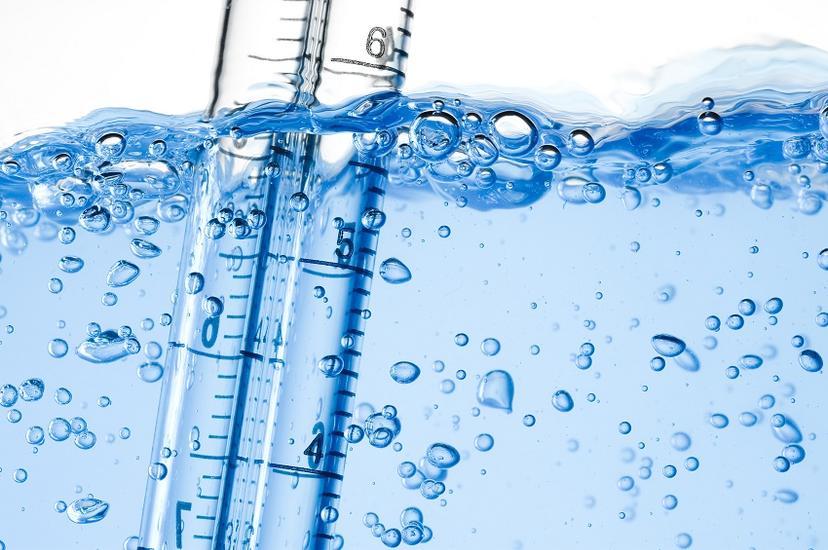Webinar Highlights: Analysis of Emerging Contaminants
Part II: Emerging Contaminant Studies in Environmental Biotechnology Using High Resolution LC-MS
3 Jul 2016

Dr Krista Wigginton, Assistant Professor at the Department of Civil and Environmental Engineering, University of Michigan

Dr Richard Jack, Senior Director of Environment and Industry at Thermo Fisher Scientific
In this webinar, Dr Krista Wigginton from the Department of Civil and Environmental Engineering, University of Michigan and Dr Richard Jack, Thermo Fisher Scientific, discussed how LC-MS is used to understand the chemical fate of small molecule pollutants, such as waterborne viruses, in drinking water and wastewater treatment processes, and how the Thermo Scientific EQuan can benefit these analyses. Read on for the summary of the Q&A session of the webinar, and if you missed it, watch the free, on-demand webinar here.
Q: Krista, you described the reactions that take place in the virus particles with photo chemical disinfection - has any work been done with other disinfectants like chlorine or chlorine dioxide?
A: I just covered the photochemical reactions today, but in the papers mentioned from 2012 and 2013 we were looking at other disinfectants. We looked at chlorine dioxide, some ozone work and chlorine. The protein reactions we detected were quite different to those detected with the MALDI-ToF and the Q Exactive. The single oxygen tended to be really specific where it interacted with the protein or the protein capsid, but chlorine reacted in lots of different regions of the capsid proteins.
One thing that was interesting with chlorine dioxide was chlorine in single oxygen and UV, those were primarily targeting the virus genomes, but chlorine dioxide targeted mainly virus proteins - we saw very little indication of genome reaction with chlorine dioxide. We could see each of the different disinfectants had a very different mechanism for deactivating the viruses.
Right now we are starting to work with chlorine to study the genome reactions. I presented here what was happening with single oxygen UV but we’re trying to look at what’s happening with the RNA genome with chlorine too. I think there’s a lot of interesting work with these other disinfectants.
Q: Why did you use Bacteriophage MS2 to study these reactions as opposed to real human waterborne viruses?
A: It’s easier to work with phage because you don’t have to worry about safety. It’s a good point that maybe they’re not always indicative of what would happen with a human virus, but especially for this research, we have to use some pretty high concentrations to study with mass spectrometry. It can be challenging with some human viruses to get to the stock concentrations that we can get to with MS2.
So we talk about virus concentrations in terms of Plaque Forming Units (PFU) per milliliter (mL), and with MS2 we can get to really high concentrations like 1014 PFU/mL. With a lot of human viruses, we can only get to 108 or 109 PFU/mL, and it’s very challenging to do this kind of mechanistic study with a mass spectrometer with these concentrations, unless we were to concentrate for a really long time and produce a whole bunch of virus stock. So that’s the main reason.
Q: Krista, how do reactions measured by mass spectrometry in RNA compare to reactions in DNA?
A: There’s been quite a lot of work done with reactions in DNA in UV, and also with chlorine and ROS restive oxygen species, but not very much done on RNA.
I’ve read some work that was done with RNA in the 1960s and 70s before they were using mass spectrometry, they thought that hydrates formed to a much greater extent in RNA than they do in DNA, and I don’t think it’s really clear why that is. The biological significance of these hydrates isn’t clear yet but there’s definitely a difference in the reactivity in the kinetics of these reactions and also in the products in DNA compared to RNA.
Q: Krista, can the damage you detect in RNA by PCR or MS be repaired by the host cell?
A: No, for DNA viruses damage that is incurred with UV can be repaired by the host cell but not RNA viruses, there isn’t a mechanism that I’m aware of where the damage we detect with mass spectrometry or rtPCR can be repaired once the virus is within the host cell.
Q: Krista, is this method used for other biological contaminates as emerging contaminants?
A: Yes, people have been using mass spectrometry to study prions and to study cryptosporidium, as well as lots of different biological contaminants.
Q: Krista, could you used a mass spectrometry based technique to monitor for viruses in real waters?
A: I don’t think right now that it would make sense, because with the drinking water we have to get virus concentrations down to a few per liter. I don’t think mass spectrometry is the way to detect those kind of levels of biomolecules. We’d need to amplify those signals first through a culture based technique or a PCR based technique if you can’t culture them. I’m not suggesting we use these to measure pathogens in water, but it helps us understand how they behave in the environment, so I think that’s the more realistic use of this time.
Q: Krista, what was the benefit of high resolution mass spectrometry for measuring MDMA?
A: There probably wasn’t really a reason we needed to use high resolution mass spectrometry to study MDMA, this is just the instrument we have in the department. The nice thing about our set up is we have the EQuan MAX Plus system, which removed the need to do offline solid phase extraction (SPE). You can just put the drinking water samples directly on the instrument, then it would go all the way through the SPE, the analytical column and into mass spectrometer. We’ve got good detection levels. Maybe it’s a good point that high resolution isn’t critical for detecting some of these targeted contaminates, but it does as well, if not better.
Q: Richard, when do you need the EQuan System for MS detection?
A: The EQuan is really designed for large volume injection or large volume extraction. It really depends on your matrix as well, if you have a contaminate that’s trace and you have a dirty matrix - so a dirty matrix can be something like a wastewater or a surface water - you may have a lot of humic acids or oils or other contaminates you want to clean up. You can do that online with the EQuan system to make things a little bit easier to do than offline
What you can do is take up to 20 ml of water with one injection, concentrate that down, concentrate and clean up the matrix at the same time, prior to the injection to the chromatography system.
Q: Richard, is the EPA going to do something for regulations of these non-regulated contaminants?
A: EPA is always looking at new or emerging contaminants or contaminants of emerging concern. So for example, the EPA Office of Groundwater and Drinking Water has a process every five years where they get likely new compounds and they do a study across the United States and they look at the scope - how many utilities across the United States actually have a particular contaminant - and they look at the concentration. From that they would choose yes or no to make it regulatory determination.
